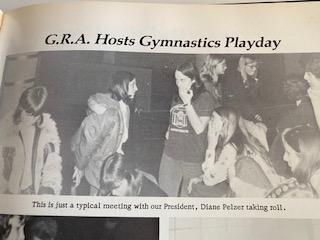The horror of Hurricane Katrina, 19 years later
 |
| That's me and daughter Kirstin, after a typical work day after the hurricane. She worked on a different project in New Orleans from the one I was on. |
Most people probably remember the most deadly hurricane in our nation's history: It was August, 2005, when Hurricane Katrina hit New Orleans and the Gulf Coast in the United States.
We were among the families horrified and sickened by the tragic situation faced by the brave people of Louisiana, Mississippi, Alabama and other regions.
Katrina was the costliest and most deadly hurricane in U.S. history. According to Encyclopedia Britannica, it started as tropical storm but worsened quickly. Some 1,800 people died, many in New Orleans. The damages were estimated to exceed $160 billion.
Visitors today who walk along the Gulf Coast region can't help but notice the historical markers erected in the 19 years since the storm. I've included two of them as examples.
It doesn't take much time to appreciate what the residents lived through, and lost. In Pascagoula, Miss., the losses were of structures which had been erected when the French settled in the area. In Biloxi, a tribute to lives lost (more than 250 souls) is in the city park, with a high water mark that towers over today's sidewalks and grass.
The storm surge from the hurricane was the highest in U.S. history, and that's probably what caused the most damage. It is sobering, to be sure.
The National Weather Service retired the name "Katrina" from hurricane names. It was replaced by "Katia" in 2011.
We Iowans reached out to help.
Through our church -- St. Ann's Catholic Church, Long Grove, Iowa -- two groups were dispatched in 2006 and 2008. Daughter Kirstin was with a group that travelled to New Orleans in 2006; I, other adults, joined the teens in New Orleans again in 2008.
While the younger folks helped paint, put up drywall, and the like, we adults focused on a home not far from one of the universities in New Orleans. We re-painted the home a clean white color -- a nice change from the orangey tone it had been before. Previous crews had repaired the roof and siding.
I'll not forget that week; local folks would stop by to thank us, and the friendly neighbors played music on their front stoops. I climbed up a steep ladder to paint the very top of this home and had a great experience, overall.
My husband and I re-visited the house a couple of years ago and it still looks nice.
 |
| Above are two examples of the signs you'll see today on the coast in Biloxi and Pascagoula, Mississippi. |




Comments
Post a Comment